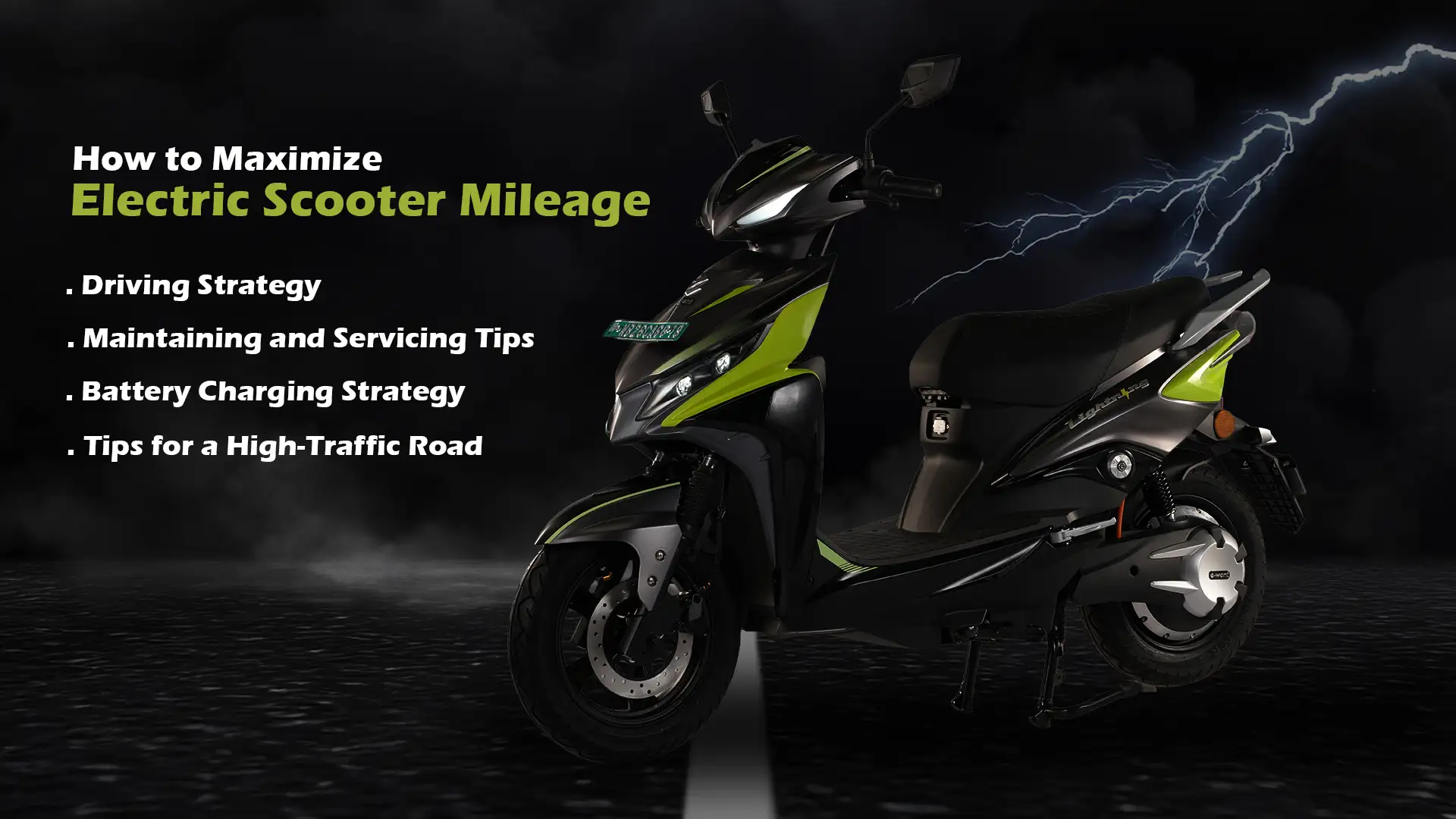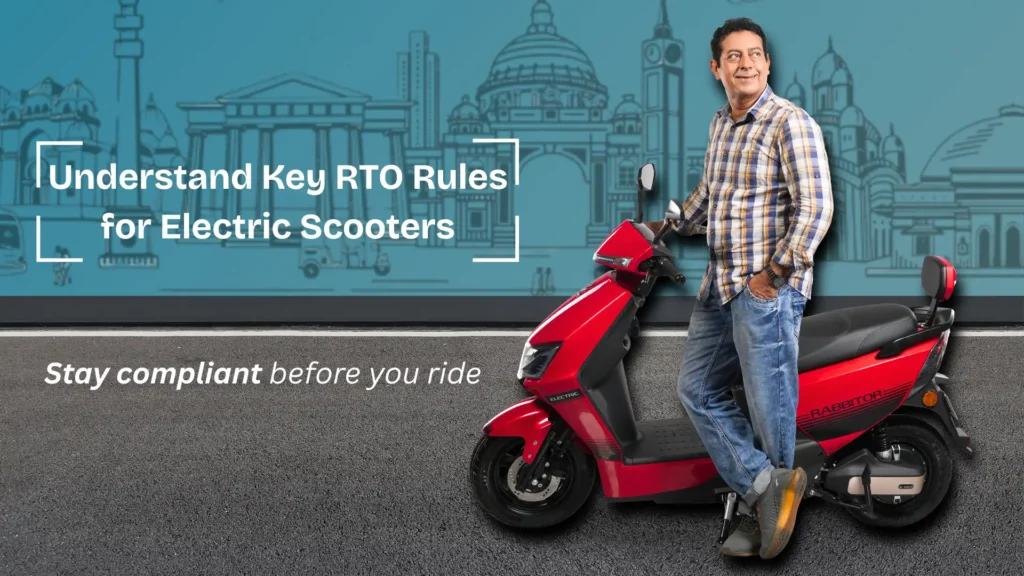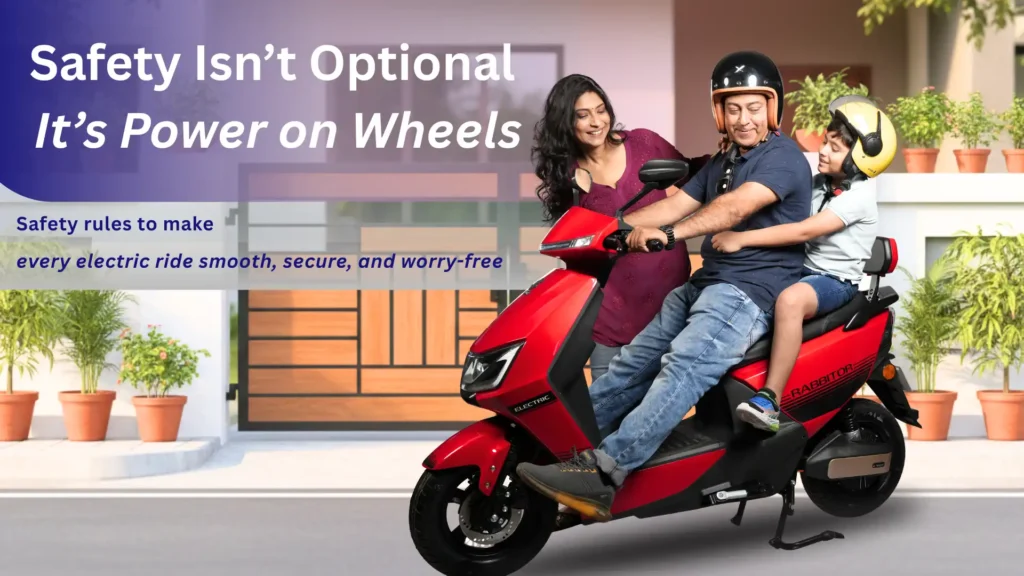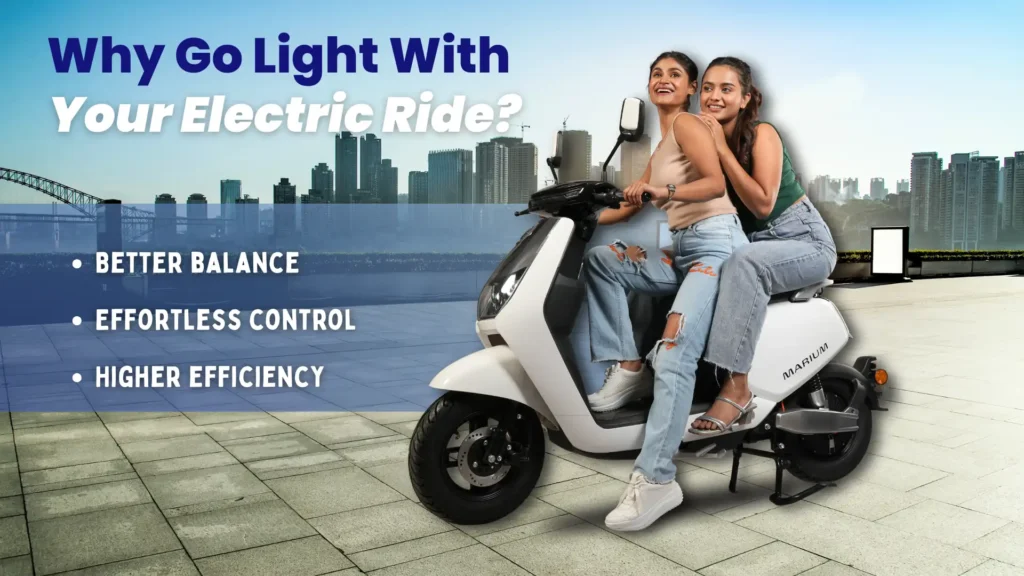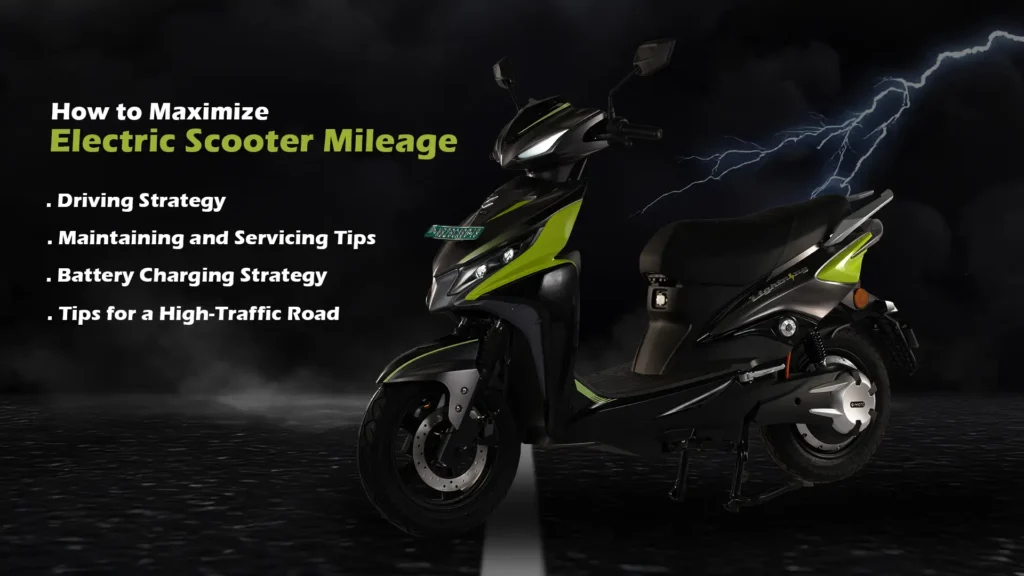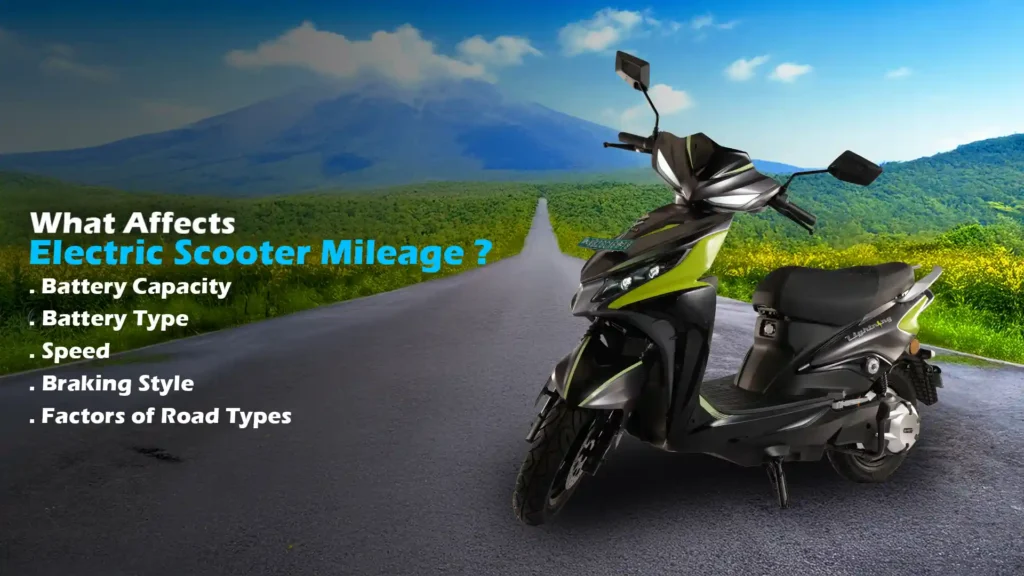Maximizing the mileage (range) of your electric scooter is all about riding smart, maintaining your scooter properly, and making strategic choices. There are various factors like driving style, servicing and maintaining factors and road type factors that can affect mileage of an electric scooter so here we are sharing the practical tips to help you get the most distance out of every charge:
Strategy to Maximize Electric Scooter Mileage
Even the best mileage EV scooter needs proper handling to achieve optimal range. Here’s how you can boost mileage:
Driving Strategy
- Maintain a moderate speed at all times, avoiding sudden acceleration and harsh braking, as these help conserve battery and improve overall mileage.
- Lighten the load by removing unnecessary items or luggage. A lighter scooter requires less power to move, which allows for a longer distance to be traveled on a single charge.
- Constant starting and stopping eats up energy. Plan routes with fewer intersections or hills if possible.
- Many scooters have an “Eco” mode that limits top speed to conserve battery.
To maximize range, riders should accelerate smoothly, use Eco mode, maintain proper tire pressure, and utilize regenerative braking.
– Times of India (Source)
Maintaining and Servicing Tips
- Check tire pressure regularly. Properly inflated tires reduce rolling resistance, allowing the scooter to move more smoothly and use less energy.
- Perform regular servicing, including cleaning the motor, checking brakes, and lubricating moving parts. Well-maintained scooters operate efficiently and achieve mileage closer to the electric scooter manufacturer’s claims.
Battery Charging Strategy
- Charge regularly (don’t let it drop below 20%) and also avoid overcharging (don’t charge above 80%).
Avoid leaving vehicles with a full or empty charge; keeping the battery’s state of charge between 20% and 80% is ideal, particularly for extended periods of inactivity.
– Written by Charlotte Argue, Senior Manager, Sustainable Mobility at Geotab (Source)
- Let the battery cool down a bit before riding, especially after a fast charge.
- Avoid Extreme Temperatures for storing and charging because batteries lose efficiency in very hot or cold weather.
Store and charge in moderate conditions (ideally 10–30°C / 50–86°F).
Strategy for Different Types of Roads
For Smooth Roads
- Maintain a steady speed, around 15-20 km/h.
- Avoid sudden starts and stops to save battery.
- Use eco mode for extra range, and keep your tires properly inflated for minimal resistance. Smooth pavement offers the best efficiency, so enjoy the glide while conserving energy.
For Bumpy Roads
- Reduce speed and avoid harsh turns to maintain stability.
- Keep your tires at the right pressure for shock absorption.
- On bumps, gently throttle and brake to avoid draining the battery.
- Suspension (if available) helps, but slow and steady is the key to safety and efficiency.
For Rough Roads
- Navigate slowly to avoid flat tires and loss of control.
- Rough surfaces increase energy consumption, so use eco mode for better battery efficiency.
- Stay light on the throttle and brakes to reduce stress on the motor, and avoid sudden drops or sharp turns.
For Hilly or Inclined Roads
Climbing steep inclines uses more battery.
- Use lower speeds or eco mode to prevent draining the power quickly.
- If possible, choose gradual slopes.
- Ride steadily, not at full throttle, to maintain control while saving energy for the rest of the journey.
Tips for a High-Traffic Road
For high traffic roads, plan your route to avoid peak congestion, and maintain smooth throttle control to prevent unnecessary battery drain.
Strategy for a Long Drive
During long drives,
- Use the energy-saving mode feature, maintain a steady and moderate speed.
- Remove unnecessary weight.
- Ensure proper tire pressure.
- Perform scheduled service to keep the motor and brakes efficient for longer rides.
Bonus Tip:
Use apps or GPS to plan the flattest, smoothest path. Avoid steep hills and rough terrain when possible.
Real-World Experience – How to Maximize the Mileage of Electric Scooter
How to increase distance per charge
byu/oprahtakethewheel inebikes
What are the basics of increasing an electric scooter’s speed and mileage? – Quora
Conclusion
To get the most out of your EV scooty, focus on smooth riding, regular maintenance, and being mindful of factors like road types. By making small adjustments, you’ll boost your scooter’s range, save battery, and enjoy longer, more efficient rides every time.
FAQ
Can I extend my scooter’s range with a larger battery?
Yes, upgrading to a bigger battery can increase range, but it also adds weight. The balance between battery size and motor efficiency is crucial for real-world mileage.
How often should I replace my scooter’s battery?
You should replace your scooter’s battery every 2-3 years, depending on usage. If you notice shorter rides or slower speeds, it’s time for a new battery. Proper care can help extend its lifespan!
Does the weather really affect the mileage?
Yes, weather affects mileage! Cold temps reduce battery efficiency, while heat can cause overheating. Wind also adds drag, making your scooter work harder. For best range, ride in mild conditions.
How can I tell if my scooter is using too much battery?
If your scooter’s range drops suddenly or the battery drains faster than usual, it might be using too much power. Check for issues like underinflated tires, motor strain, or battery wear to fix it.

